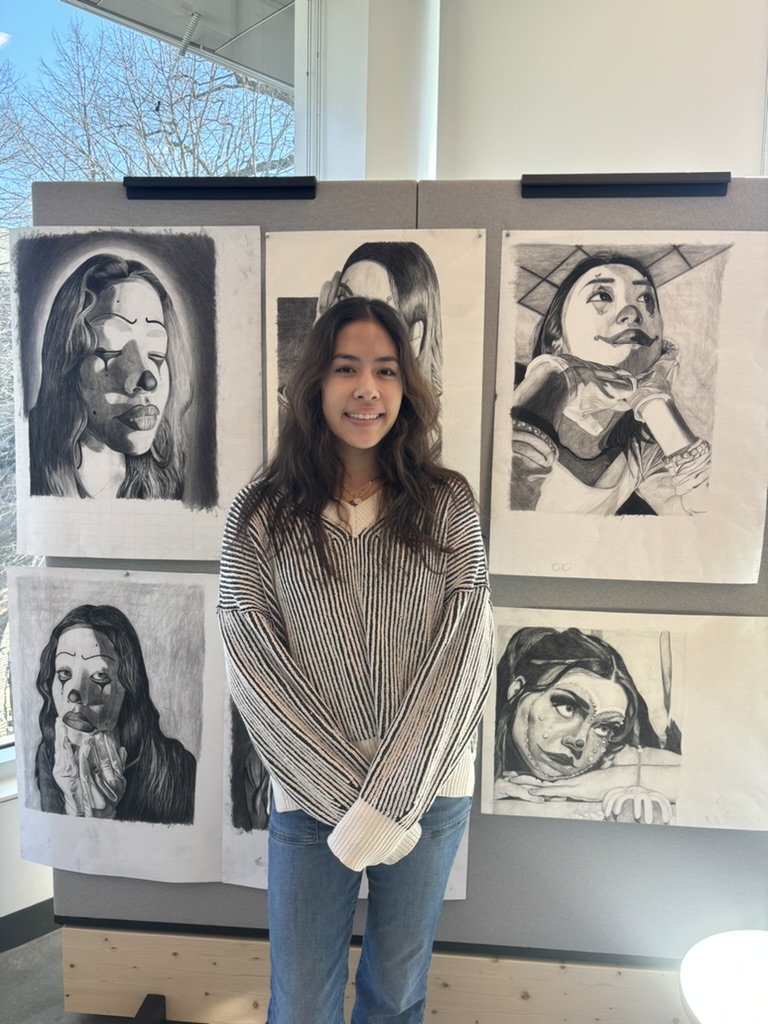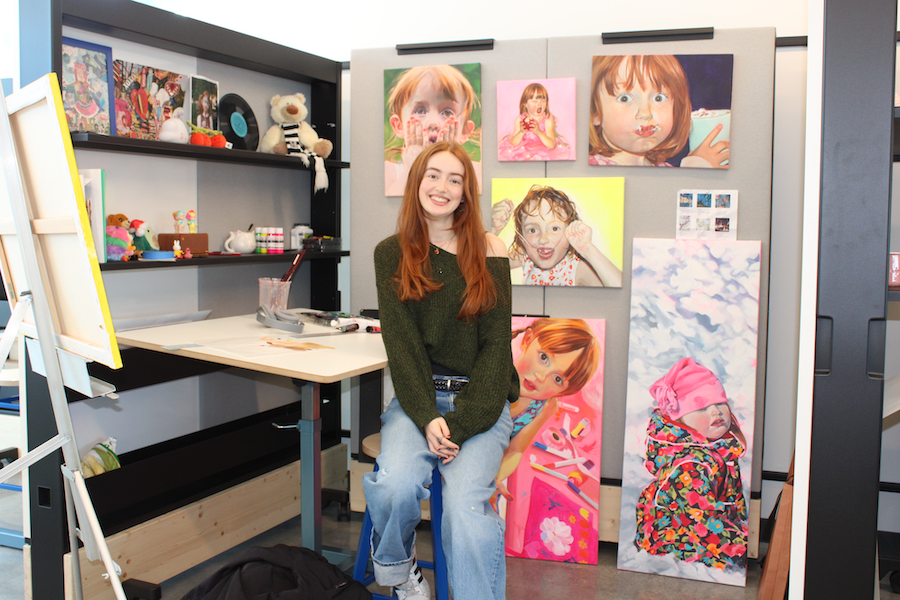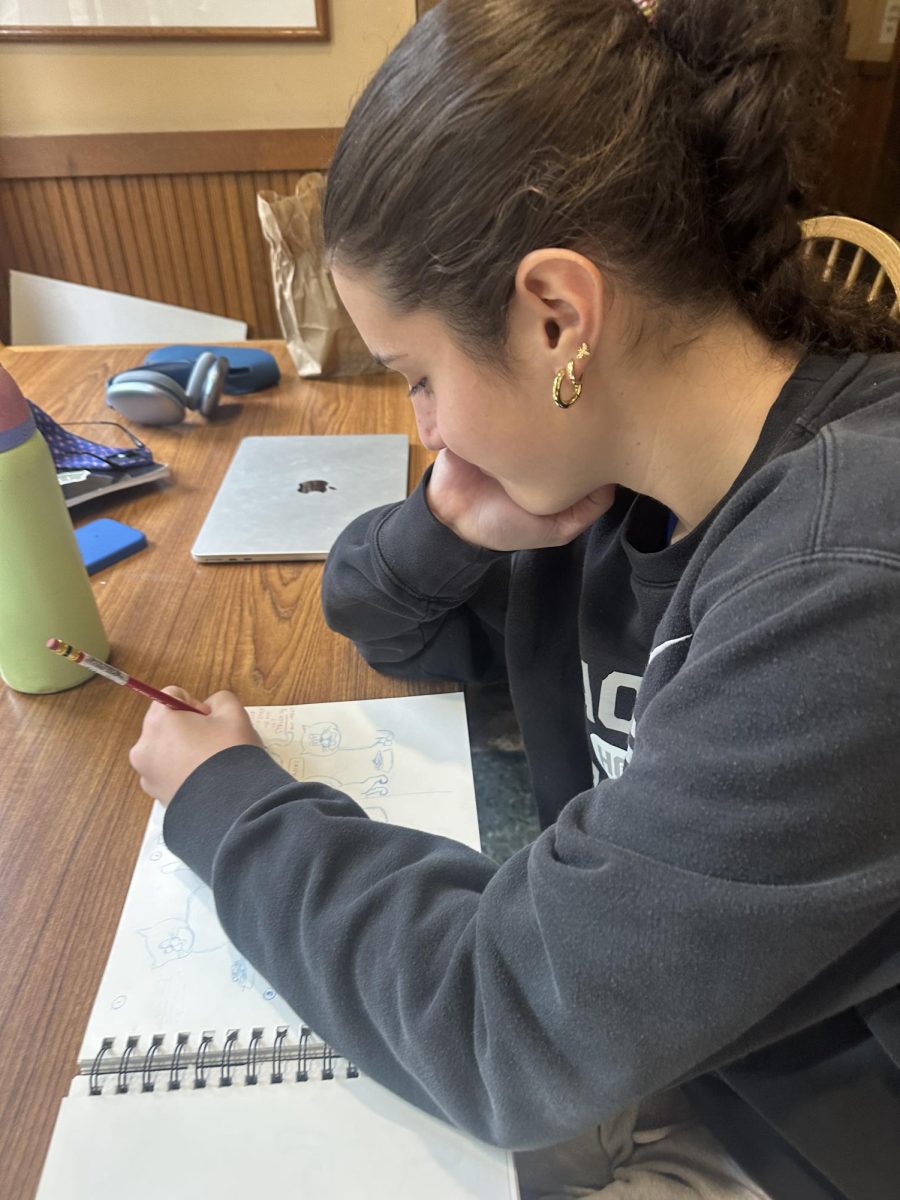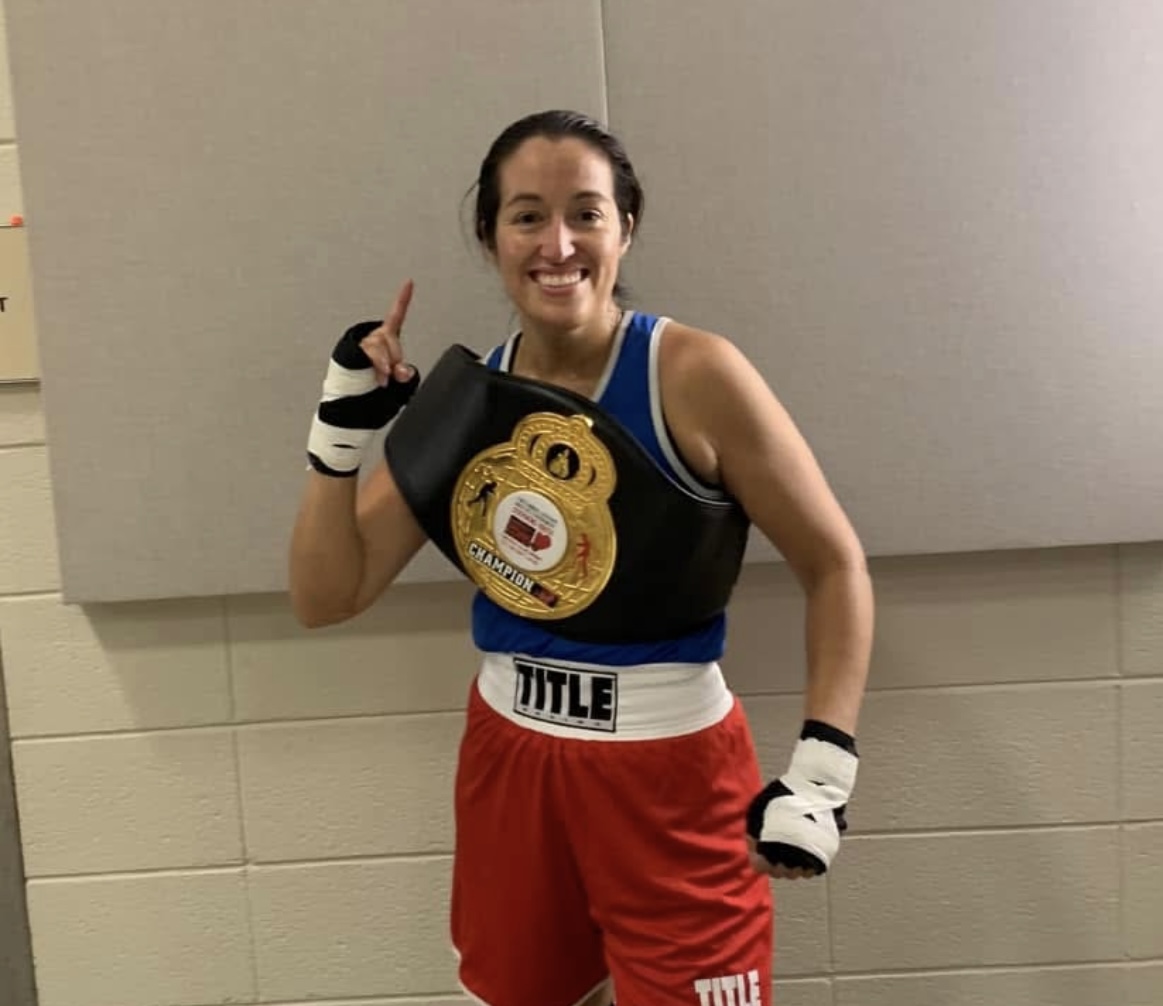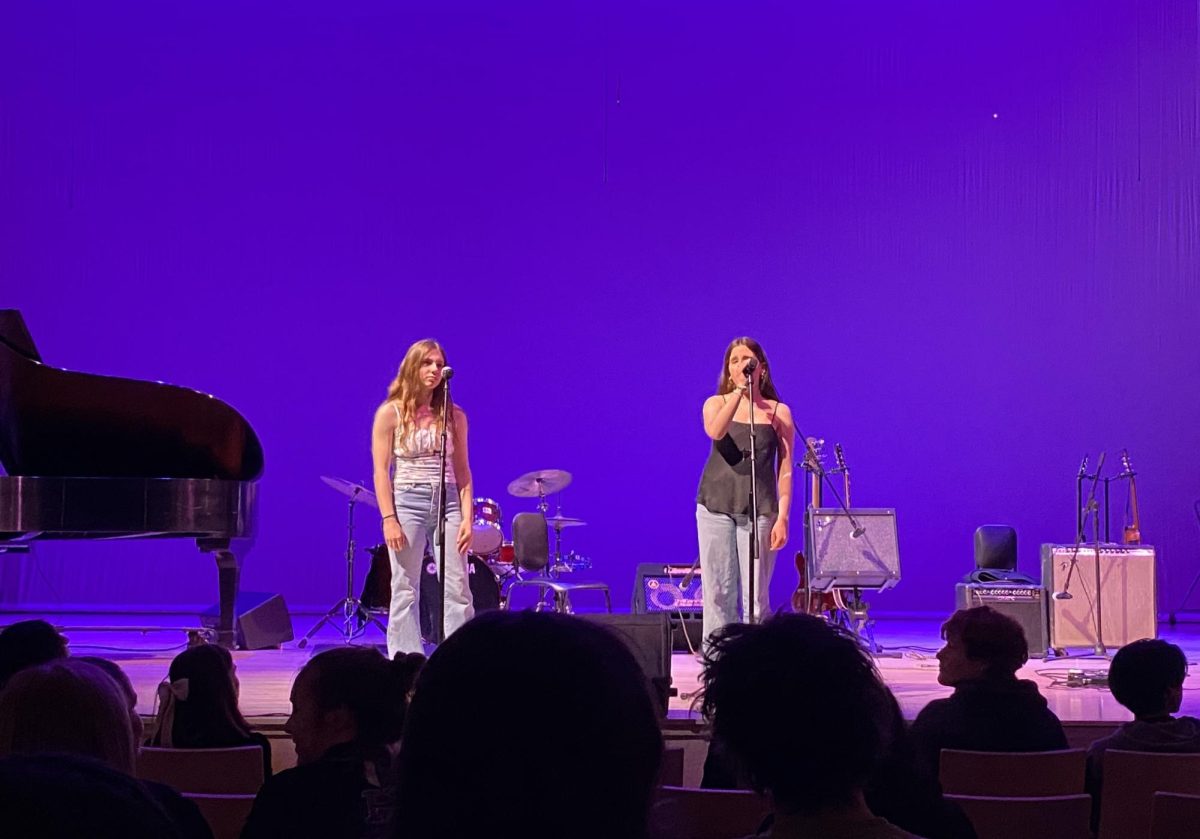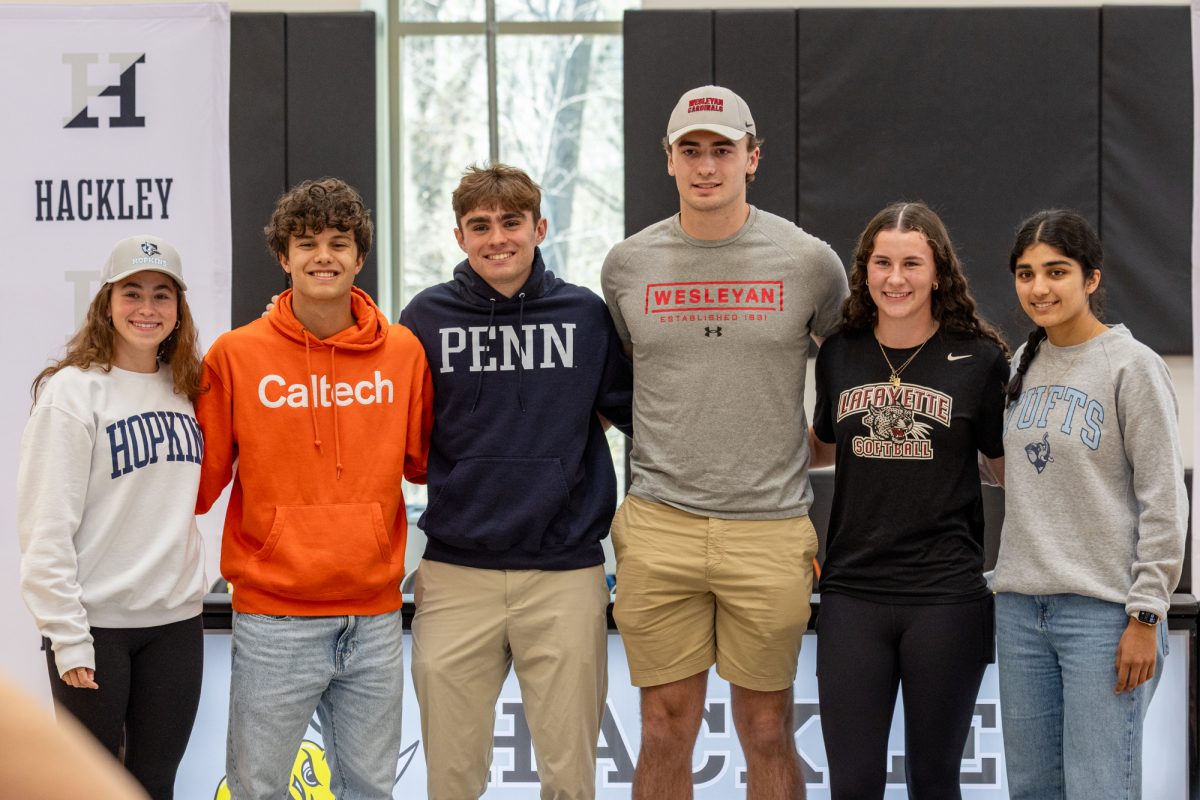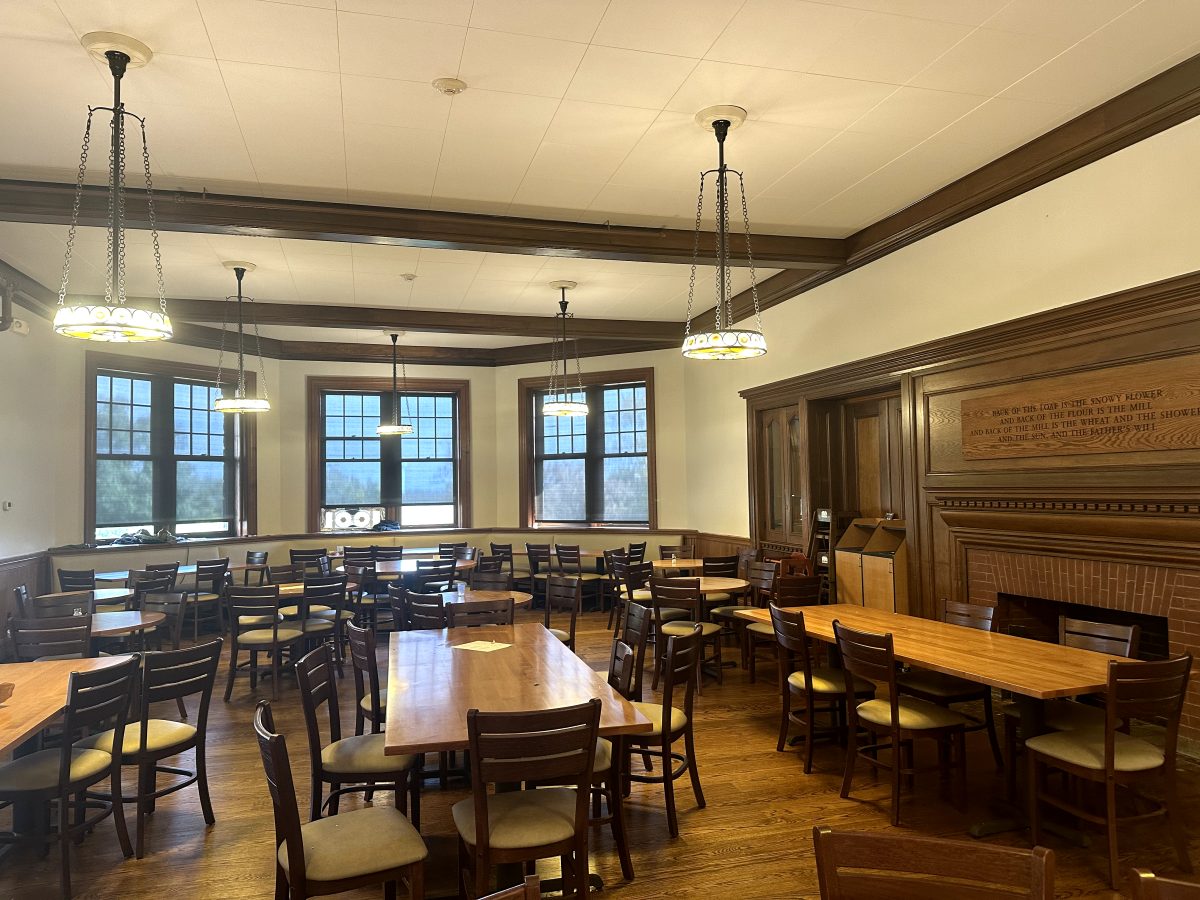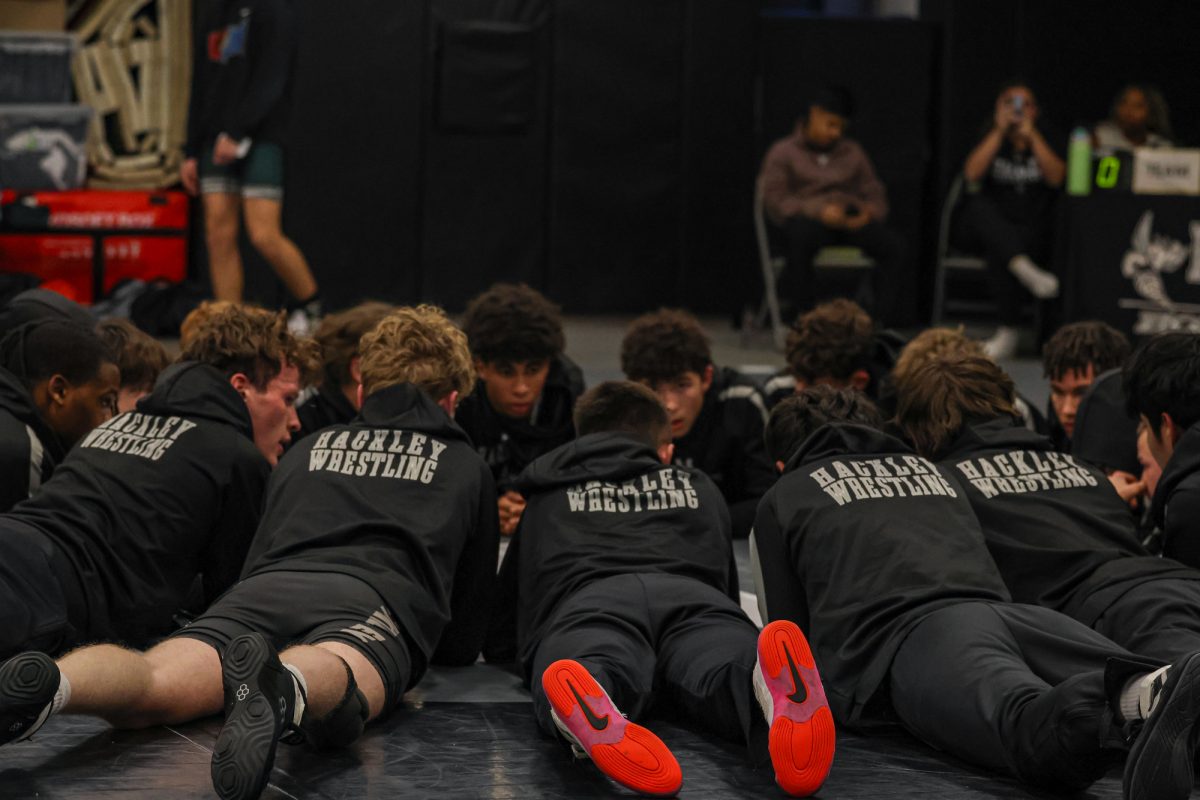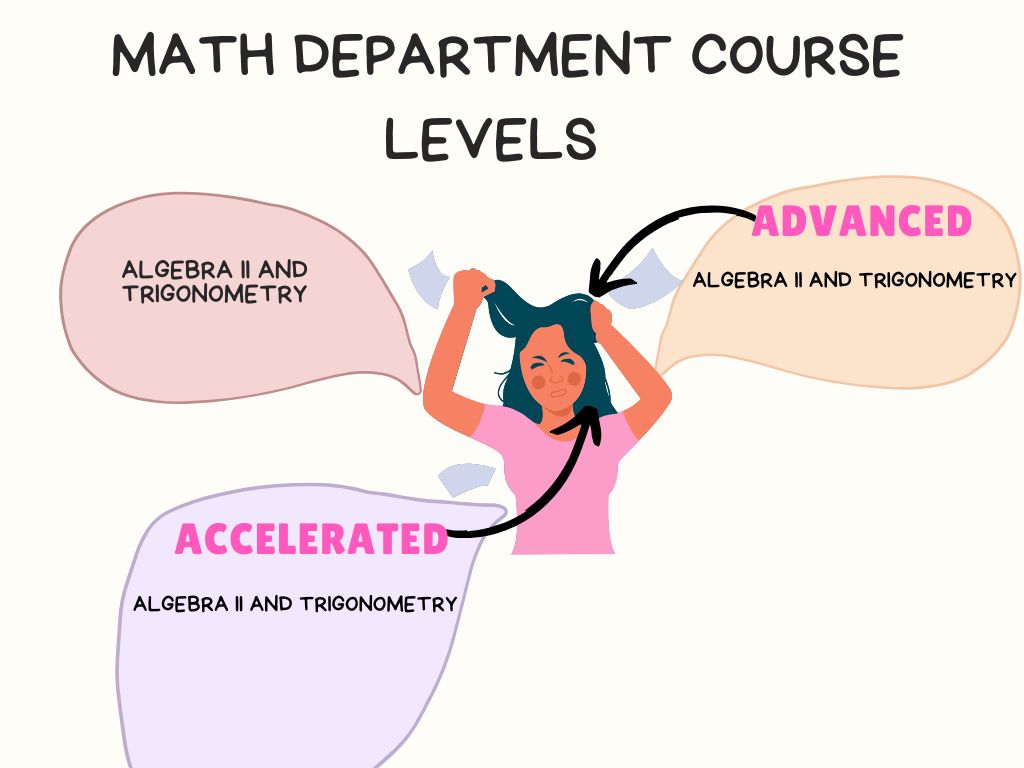When walking through the halls of Raymond, one can spot many art pieces decorating the walls. But whose work will now be put on display? This year some Hackley seniors are pursuing AP Studio Art taught by Greg Cice. The Dial interviewed Harper Kelsey, Elyse Wang, and Scarlett Kaplan to learn more about their pieces.
Senior Harper Kelsey’s concentration is on her grandma’s basement because it is a representation of four to five generations of her family.
“There’s a lot of contradictory objects like punk posters, next to crucifixes, next to ballet slippers and it’s just interesting to try and bring all of those elements together”, said Harper.

This is one of senior Harper Kelsey’s pieces which depicts a crucifix and a Barbie doll. She shifted her concentration from wrestling to her grandma’s basement. This is one of her many pieces that she has to complete for the class.
Prior to starting AP Studio Art in the fall, each student has to complete summer work so that they are ready to jump right into creating pieces when the school year rolls around.
For Harper, her summer work was focused on a different concentration that she moved away from because she felt that it was very repetitive. She was originally going to complete pictures of wrestling with blurred motion but after two pieces she felt there was not enough diversity to keep her interested throughout the year.
The way Harper landed on her new concentration was unexpected. “I was sent down to the basement to pick up something for my grandma and I was just looking around and I was like ‘Oh My God’ this is so interesting. There are so many little details that are easy to look over if you don’t know what to look for and this is what I want to do. I want to show all of these little things and find a way to unearth them”, stated Harper.
When asked about how Hackley’s art program has prepared her for the Advanced Placement course, she replied, “Hackley undoubtedly has one of the best high school art programs around and it’s super high level, you’re expected to learn how to do things to a really high degree”.
She believes that “it comes down to the way that the art is built up foundationally, so you build on skills that you’ve developed over the years and you learn how to really put time and focus onto a piece and it creates these really high-level works of art”.
In terms of the general layout of class time, students either have time to work on pieces independently and Mr. Cice gives advice where needed or there are critiques. Critiques allow artwork to be hung on the wall and for them to be examined person by person. The class is able to discuss what was successful in a given piece, what was less successful, and what should be focused on in the future. Critiques tend to occur once every two weeks.
The medium or supplies used for pieces is granted to each student but as part of the artist statement they have to justify why they chose the medium that they did. The College Board requires twelve pieces to be submitted but students tend to create more so that they have options and can decide what they would like to cut.
Harper also mentioned the way that the College Board grades work, “it comes down to are the images interesting, are they composed well and then are they executed well. There’s also a focus on having a cohesive idea connecting them and making sure your concentration or sustained investigation is strong as it can be and there’s a real conceptual idea behind it”.
Reflecting on her love for art, “as a kid I was convinced I was going to be an artist, but then I branched away from it in later elementary school through middle school and then taking art classes is what got me back into it and made me want to take AP because I realized it was really meditative” Harper added.
There are two sections of AP Studio Art this year and Harper’s class consists of five students. In order to take the class, each student has to follow the art trajectory laid out by Hackley. At the end of junior year students sit down and meet with Mr. Cice to make sure they are on track for this course.
When asked about any advice she has, Harper replied, “Drawing is really just about noticing and seeing. It’s about getting into all of the little details and making sure that the patterns of light are expressed just as they are in the object and dissecting shadows as much as you can to make sure every single value that’s in the image is on your drawing. There’s really nothing beyond drawing other than seeing and demonstrating that you’ve seen every detail”.
For senior Elyse Wang, she is still slightly unsure of her concentration but it is along the lines of junk food and she doesn’t know if she wants to present it in a good or bad angle.
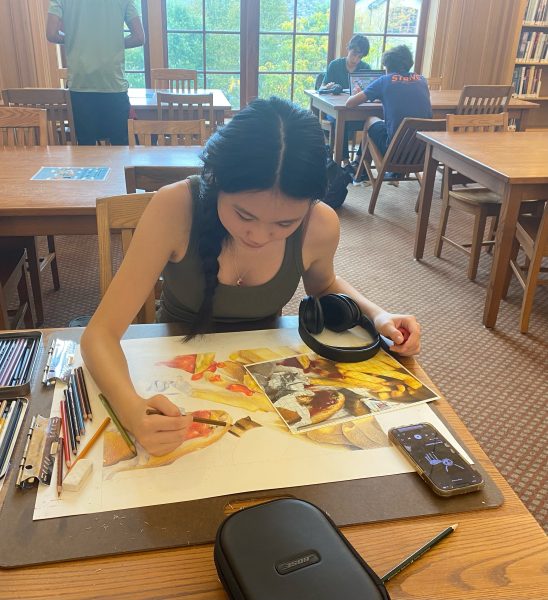
Senior Elyse Wang is working on one of her pieces for AP Studio Art and her concentration is centered on junk food. She is using colored pencil for this piece which she has not used to a great extent previously. She always had a passion for art and now she is able to take a class that is quite rigorous in nature.
“I think it’s a subject that people normally don’t do a concentration on and I think it’ll be fun”, said Elyse.
Over the summer she didn’t know this was going to be her concentration because she thought it was going to be food more generally. So she figured out her concentration as she finished one of her summer pieces.
She believes that the Advanced Studio Art class that she took as a junior at Hackley really prepared her for AP Studio Art. She also attends art classes outside of school, “it’s less on techniques [compared to Hackley] and more creative. I would make a piece out of magazines and I would collage a piece and I would cut things out of paper and stick it on cardboard. So it’s very different from Hackley but I like doing both”, said Elyse.
When discussing the breakdown of classes, as mentioned earlier, they have critiques every two weeks but they can last anywhere from two to three days. Elyse added that critiques were not part of the Advanced Studio Art curriculum so this provided some separation between work time in class and having the chance to examine other student pieces.
Elyse has worked with many materials for her artwork including oil paint, charcoal, graphite, and colored pencil. She is now working on a piece with colored pencil which is the first time she is using this material which has made her piece take slightly longer than normal.
When asked about the College Board’s grading system, she said that Mr. Cice recommended having a specific concentration. She believes they grade students on their technique since this is a crucial part of producing artwork.
She has always had a passion for art and before she took art classes outside of school she did traditional Chinese painting which she believes really sparked her interest. “Freshman and sophomore year I was still figuring it out and junior year I was like I think I should go deeper into this because I really do like it. So that’s when I started taking art a lot more seriously”, stated Elyse.
She mentioned that when the class is occurring during the 75-minute time frame Mr. Cice brings them food or plays music in the background. This helps elevate the mood and provides a nice working environment. She also added, “it is a lot of work but I don’t regret taking it”.
Her advice for artists is: “Don’t procrastinate on art. Do not wait until the last second because the thing about AP Art that’s challenging is the timing because it is so time-consuming. I feel like each piece you do you have to spend at least ten hours on it and if you don’t space that out well in the two weeks and you try to do everything in the last two days, it’s not going to be done and it’s not going to be good. So definitely for art I feel like you have to put your time into it and if you need help reach out so you can figure out how to do it and make the process a lot faster”.
Another AP Studio Art student, senior Scarlett Kaplan is focused on floral forms and the abstract and intricate patterns that are present in petals as well as stems. Regarding her summer work, she made three pieces that were close-ups of flowers. One was completed in charcoal, another in oil pastel, and the third in chalk pastel.
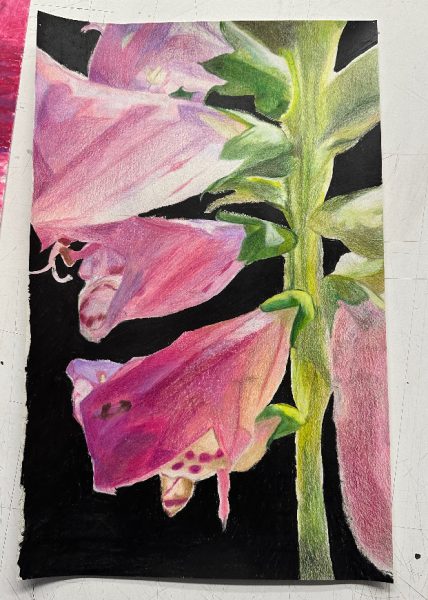
This piece is something that senior Scarlett Kaplan completed over the summer. She produced quite a lot during the summer in preparation for the rigors of the course. Her concentration is focused on floral forms and the intricate patterns of petals and stems.
Scarlett has varied the materials she is using to complete her pieces but she is mainly working with colored pencil as of now. She remarked, “Once I go bigger in my piece sizes I may go back to oil pastel”.
Given that this course is quite advanced and fast-paced, she spends a lot of time on her pieces – particularly during her frees. “Often the night before a piece is due I’ll spend four hours straight on it’”, stated Scarlett .
When asked about her passion regarding art she stated, “I’ve always been pretty creative with art, although I think that Hackley art has pushed me to be the most creative and skilled artist I can be”.
Some of her advice for artists is to always push your values – light and dark – and to never rush completing the artwork. Additionally, “time management is the most important aspect of AP Art. Without proper pacing and scheduling, you’re pretty much doomed to complete 15 pieces by the end of the year, which is a lot of art when you consider that we only did three pieces in Advanced Studio Art”, said Scarlett.
Overall, students who consider art as one of their passions should certainly take AP Studio Art in their senior year and be the ones displaying their work throughout Hackley.

